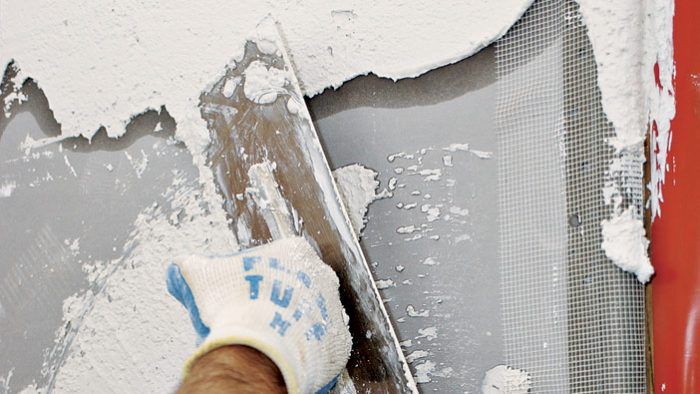Plastering Fixing: Quick and Cost Effective Repairs for Cracks and Damages
Plastering Fixing: Quick and Cost Effective Repairs for Cracks and Damages
Blog Article
A Comprehensive Guide to Learning Plastering Abilities for Your Remodelling Needs

Essential Devices and Materials
Different crucial tools offer distinct purposes, making certain efficiency and precision throughout the gluing process. A high-grade trowel, for instance, is indispensable for applying and smoothing plaster, while a hawk provides a steady platform for holding the material.
In addition to tools, selecting the right plastering products is crucial. Gypsum-based plasters are typically preferred for their flexibility and convenience of usage, while cement-based choices are excellent for outside applications due to their longevity. Water and bonding representatives play substantial roles in accomplishing correct consistency and attachment, making certain that the plaster sticks properly to the surface area.
In addition, protective gear such as gloves, masks, and goggles is vital to guard against dirt and inflammation throughout the application procedure. By assembling the ideal combination of devices and products, plasterers can enhance their skill set and generate high-quality coatings, ultimately boosting the overall workmanship of their work.
Preparing Surface Areas for Plastering
Attaining a sturdy and smooth plaster coating starts with careful prep work of the surface areas to be glued. This foundational step is crucial to making certain attachment and the long life of the plaster. Begin by examining the problem of the substratum-- whether it is drywall, masonry, or concrete-- getting rid of any kind of loose paint, dust, or particles that may hinder bonding.
Next, repair any flaws such as fractures or openings. Make use of an ideal filler to achieve a degree surface; this can be crucial for avoiding future concerns. When repaired, make sure the surface area is completely dry and clean, as wetness can compromise plaster adherence.
For porous surface areas, it is a good idea to apply a bonding agent. This item boosts bond and develops a trustworthy user interface in between the plaster and substratum. If functioning with formerly plastered surface areas, it may be needed to scuff or sand the area gently to provide a trick for the new plaster layer.
Smudging Methods and Tips
Grasping smudging methods needs both skill and practice to achieve a flawless surface. One crucial method is the application of the plaster in numerous thin layers, instead than a single thick layer.
When using the surface coat, utilize a troweling method that includes holding the trowel at a slight angle and functioning in a round motion. This helps to develop a smooth surface area and minimizes the look of trowel marks. Furthermore, keep a spray container of water useful to mist the surface lightly; this maintains the plaster practical and enables smoother finishing.
Timing is essential; job successfully, as the plaster starts to establish. Once the plaster has firmed up but is still wet, utilize a damp sponge to carefully smooth the surface area better. Finally, allow appropriate drying out time prior to fining sand or painting, ensuring your effort causes a professional, premium surface.
Typical Errors to Prevent

Another usual mistake is using plaster click over here as well thickly. Overzealous applications can bring about fracturing and long term drying times. It's necessary to apply plaster in thin, even layers, allowing each coat to dry sufficiently prior to including a lot more.
In addition, not using the right devices can prevent the quality of the finish. Using inappropriate trowels or mixers can create variances in the plastering procedure. Constantly choose high-grade devices designed for gluing tasks.
Lastly, many individuals undervalue the importance of timing. Functioning in improper temperature levels or humidity levels can detrimentally affect plaster drying and treating. It is recommended to inspect weather problems and adapt your routine appropriately.
Completing Touches for a Specialist Look
The last phases of a smudging task are important for accomplishing a sleek, professional look. As soon as the plaster has Look At This dried completely, the next step is to evaluate the surface for blemishes. Small bumps, openings, or irregular locations need to be attended to utilizing fine sandpaper or a fining sand block. This careful focus to information is crucial for making certain a smooth coating.
After sanding, it's a good idea to cleanse the surface to get rid of any dust and debris. A wet cloth works for this purpose, complied with by a detailed drying out period. If essential, using a thin layer of completing plaster can enhance the surface area additionally, providing a seamless finish.
Once the completing plaster is dry, one more round of sanding may be needed to attain the desired smoothness. Finally, consider using a guide prior to paint or wallpapering, which will enhance bond and sturdiness.
Conclusion
Understanding plastering skills dramatically enhances the quality of restoration tasks. A comprehensive understanding of vital devices, surface preparation, and effective techniques is critical for accomplishing professional results. Awareness of usual errors allows for the avoidance of costly errors, while focus to finishing touches makes certain a sleek look. Inevitably, the combination of these elements adds to the development of smooth, long lasting surface areas that raise the aesthetic worth of any kind of space, underscoring the importance of experienced plastering in home enhancement continue reading this undertakings.
Water and bonding agents play significant duties in attaining proper consistency and bond, making certain that the plaster sticks efficiently to the surface area. Plastering.


Furthermore, maintain a spray bottle of water useful to haze the surface area lightly; this maintains the plaster workable and enables for smoother completing. (Plastering)
If required, applying a slim layer of ending up plaster can boost the surface area even more, giving a smooth surface.
Report this page